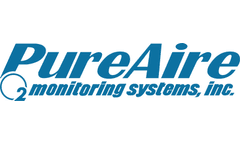Process For Semiconductor Articles & Analysis
17 articles found
Processes like ion beam etching must stop precisely at targeted etch depths to preserve layer integrity and device function. ...
The semiconductor industry’s pursuit of smaller, faster, and more efficient chips presents a growing challenge: silica management. Silica is integral to chip production, from raw materials like silica ingots to manufacturing processes. Effective silica management solutions for semiconductor companies are crucial for both product quality and ...
When it comes to semiconductor fabrication, semiconductor photoresists play a vital role, especially during the photolithography process. ...
Semiconductor foundries or “fabs” are expensive to build and can take several weeks or months to produce finished chips for use in devices. ...
In semiconductor manufacturing, improving yield—the percentage of good chips produced—is crucial for maximizing efficiency and profitability. One key factor in enhancing yield is wafer metrology. By accurately measuring and analyzing wafers, manufacturers can significantly reduce defects and improve the overall quality of their products. This article explores how wafer metrology ...
The semiconductor fabrication industry, which is vital to the modern digital era, hinges significantly on the precision and purity of gasses used in its manufacturing processes. Ultra high purity gas mixing plays a pivotal role in ensuring the quality and performance of semiconductors. This article delves into the intricacies of ultra high purity ...
In the high-stakes realm of semiconductor manufacturing, the accuracy and purity of gases used in the production process are not just beneficial, they are imperative. At Cambridge Sensotec, our expertise in semiconductor gas analysis plays a pivotal role in this sector. By providing sophisticated gas analysis solutions, we ensure the highest ...
Semiconductor materials are a class of electronic materials that have semiconductor properties and are used to make semiconductor devices. ...
Besides being a weak anesthetic gas, for instance in the context of dentistry, Nitrous Oxide (N2O) is also essential for the Semiconductor production process. It is the main Oxygen source for Silicon Oxide in the Chemical Vapor Deposition (CVD) process and is used in the high-tech thin film industries and LCD-display manufacturing. In combination ...
We use semiconductors for practically everything Microprocessors and the semiconductors they use are the small but formidable brains that help power our society. For most of us, these chips remain invisible, even though they are engineered into virtually every modern product - from your car to your phone to the toaster in your ...
The Challenge: One of the biggest challenges in using lithography in high-volume semiconductor fabrication is photomask defectivity. A global supplier to the semiconductor and photomask making industries asked Air Innovations to create an environmental control unit (ECU) that could service — on demand — any of its nanomachining mask repair tool systems. Extremely tight tolerance was ...
Why use MicroBlasting for Semiconductor Processing? MicroBlasting is the ideal method for cutting slots, holes, and apertures in thin, fragile substrates. ...
European SUCCESS for global application success The fabrication process of the CIGS semiconductor layer is the key driver for both, the further increase of efficiency, and the reduction of manufacturing cost of CIGS solar modules. ...
Real-time VOC monitoring in FOUP, fab and the clean-room environment Airborne Molecular Contamination (AMC) is more and more taking center stage in today’s semiconductor manufacturing processes. In the past the focus was on filtering particles from the ambient air in the clean-room to reduce their negative impact on production yield. ...
Around 75 percent of the energy produced by the luminary is turned into heat, while the remaining 25 percent is converted into actual light. The initial warmup process takes around five to 15 minutes, depending on the type of metal halide fixture. ...
How and Why Nitrogen is used in Semiconductor Manufacturing Plants Nitrogen is used throughout the manufacturing process, from purging pumps to abatement. Nitrogen is also used in the process, especially now that fab size is growing. In a modern semiconductor manufacturing plant, as much as 50,000 cubic meters of nitrogen gas ...
With the increased emphasis on the purity of cleaning, etching and treatment gases by the semiconductor industry, advanced analysis instrumentation is required to monitor the electronic specialty gases and to verify the performance of process tools and components. ...
















